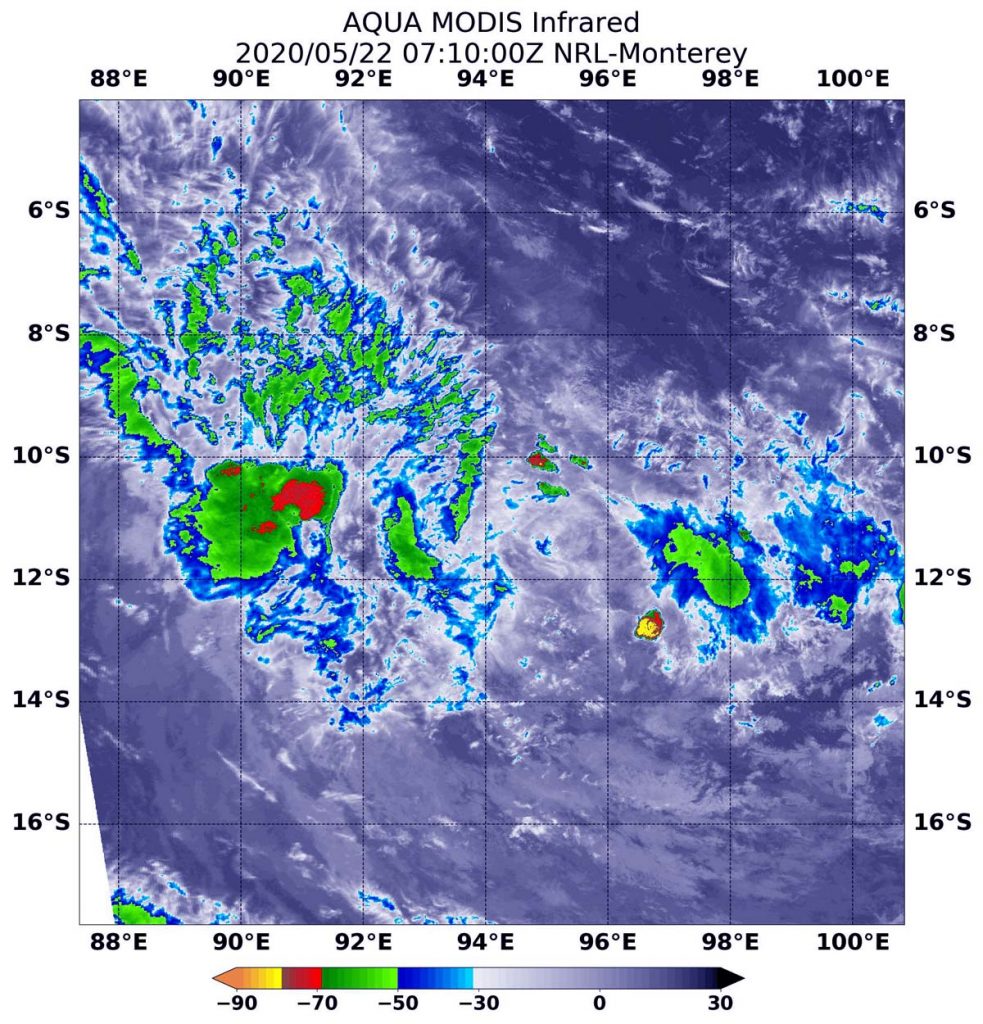May 22, 2020 – NASA Examines Tropical Storm Mangga in Infrared Light
NASA’s Aqua satellite used infrared light to provide forecasters with a look at the temperatures of the cloud tops in Tropical Storm Mangga.

Mangga, formerly known as 27S, is moving through the Southern Indian Ocean. Mangga was approaching the Cocos (Keeling) Islands, where a tropical cyclone warning was in effect on May 22.
NASA’s Aqua satellite used infrared light to analyze the strength of storms in Mangga. Infrared data provides temperature information, and the strongest thunderstorms that reach high into the atmosphere have the coldest cloud top temperatures. On May 22 at 3:10 a.m. EST (0710 UTC), the Moderate Resolution Imaging Spectroradiometer or MODIS instrument aboard NASA’s Aqua satellite gathered temperature information about Tropical Storm Mangga’s cloud tops. MODIS found one area of powerful thunderstorms where temperatures were as cold as or colder than minus 70 degrees Fahrenheit (minus 56.6 Celsius). Cloud top temperatures that cold indicate strong storms with the potential to generate heavy rainfall.
Cloud tops of storms surrounding that area were warmer, indicating those storms were weaker and fragmented.
At 5 a.m. EDT (0900 UTC) on May 22, Tropical Storm Mangga was located near latitude 11.1 degrees south and longitude 94.2 degrees east, about 1,324 nautical miles west-northwest of Learmonth, Western Australia. Mangga was moving to southeast and had maximum sustained winds near 35 knots (40 mph/65 kph).
Mangga is forecast to strengthen to 45 knots (52 mph/83 kph), but become extra-tropical before making landfall in southwestern Australia on Sunday, May 24, between Perth and Learmonth.
Typhoons and hurricanes are the most powerful weather events on Earth. NASA’s expertise in space and scientific exploration contributes to essential services provided to the American people by other federal agencies, such as hurricane weather forecasting.
